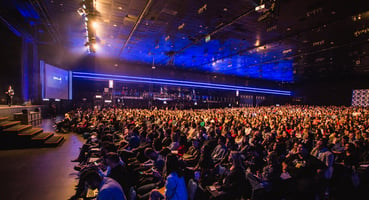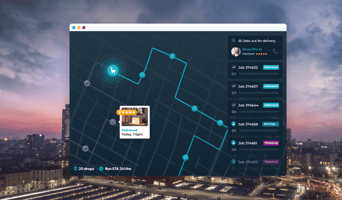We’ve been busy. With Covid-19 turning Australian retail on its head, we’ve had to learn, grow and...
The convergence of Bricks and Mortar, e-comm & the 2-Hour home delivery was Blue Sky retail – it just happened!
Where do we begin to describe the technical capabilities affording today’s retailers?
Anything is available for the brave, and most is affordable for the adaptable.
So why, even amidst a global pandemic wreaking havoc on well-established retail businesses, haven’t retailers pulled out all stops to revisit the questions ‘What business are we really in?’, and ‘How can we adapt to the new paradigm of empty malls, closed stores and very vacant sidewalks?’.
To the traditional merchandiser with a shop front business, stock on the shelves and staff ready to process merchandise into cash at the registers, the pieces are all there, they just need to be forged together.
It starts with challenging the thinking of what it is to be a retailer; ‘What keeps my business open and my customers coming back?’, ‘Who are my customers?’, ‘What is my shopfront?’ and finally, ‘What does my customer expect of me now?’.
These are paradigms that are being shifted around every day, now more than ever after the blowtorch test of the COVID19 Pandemic. But at Sherpa, we wonder why many retailers have still not begun to ponder these questions, and what is still to come.
Over the past 3 months, the world of retail has changed, and these changes have come with no plan, budget, schedule or roadmap. From a front-row seat, Sherpa has witnessed how robust retailers have moved to adapt, whilst others still await a return to normalcy.
From our unique vantage point, Sherpa can report the 5 key observations of clients that have successfully traversed the recent challenges of the Covid-19 pandemic and will come out of it better businesses. (Names and sectors will be withheld for confidentiality reasons). From the onset, it was clear these retailers had reassessed what business they were in, and understood both themselves and their customers enough to implement a plan to adapt or die. All demonstrated the following traits:
1. Came out quick with a plan for change.
As early as February 2020, these companies were prepared for a changed world. They did not take half measures nor expect the changes to be small. The enormity of the change was not lost on them, and all knew the seriousness of its long-term impact.
2. Future plans were brought forward and existing plans binned.
Many already had plans to converge their online platforms with the Bricks & Mortar presence – turning their retail outlets into mini distribution centres, thereby significantly reducing the time from the online ordering of a product to the customer receiving it. These plans were fast-tracked with a view to forging the new normal as quickly as possible. It was a one-way path with no half measures. A quick response to an immediate obstacle brought about by the lockdowns.
3. Learn and refine as we go.
In the absence of a perfect plan, these retailers appreciated what they were doing had no precedence or playbook. Drawing parallels with the Dot.com boom of the ’90s, some foresaw the impending upheaval and accepted that mistakes and corrections were inevitable. ‘Better to get it 75% right, and adapt as we go, than to fall too far behind and make it almost impossible to claw back from inaction’ said one Operations Manager.
4. Bring your partners along for the journey.
Sherpa was involved in the planning and execution of these changes from the onset. Any experience, precedence, tech foresight and operational insight were drawn upon and applied to the customers’ situation. Sherpa BDM’s, Tech Developers and Operations personnel were called upon to provide input into plans and rapid execution.
5. Build it to be a competitive advantage.
These retailers saw the opportunity to build the convergence not only as a reactive, defensive play but also as an opportunity to permanently gain an advantage over their competitors. Many forecasted a percentage market share gain from the quick move and welded on marketing programs to promote the change to their customer base. The payback has been evident and now forms a permanent cornerstone of the retailer’s business model.
Similar to the way the electronic cash register, the credit card, extended trading hours, the internet and the online store coincided to permanently change the face of retail, so too will the many aspects of successful home delivery. Re-defining convenience and customer service will again force retailers to re-examine what their business is, and who will emerge from the ashes bigger and better.

Nor is it the 1-2 day journey, in which a product visits 2 different warehouses and is handled by 3 different couriers before finally arriving in the customer’s hands. Last-mile is now the on-demand, point to point delivery from store to door, and the success with which it is done, determines not just a boost in sales or a satisfied customer, but whether or not brands survive long enough to capitalise on the new retail world order.


